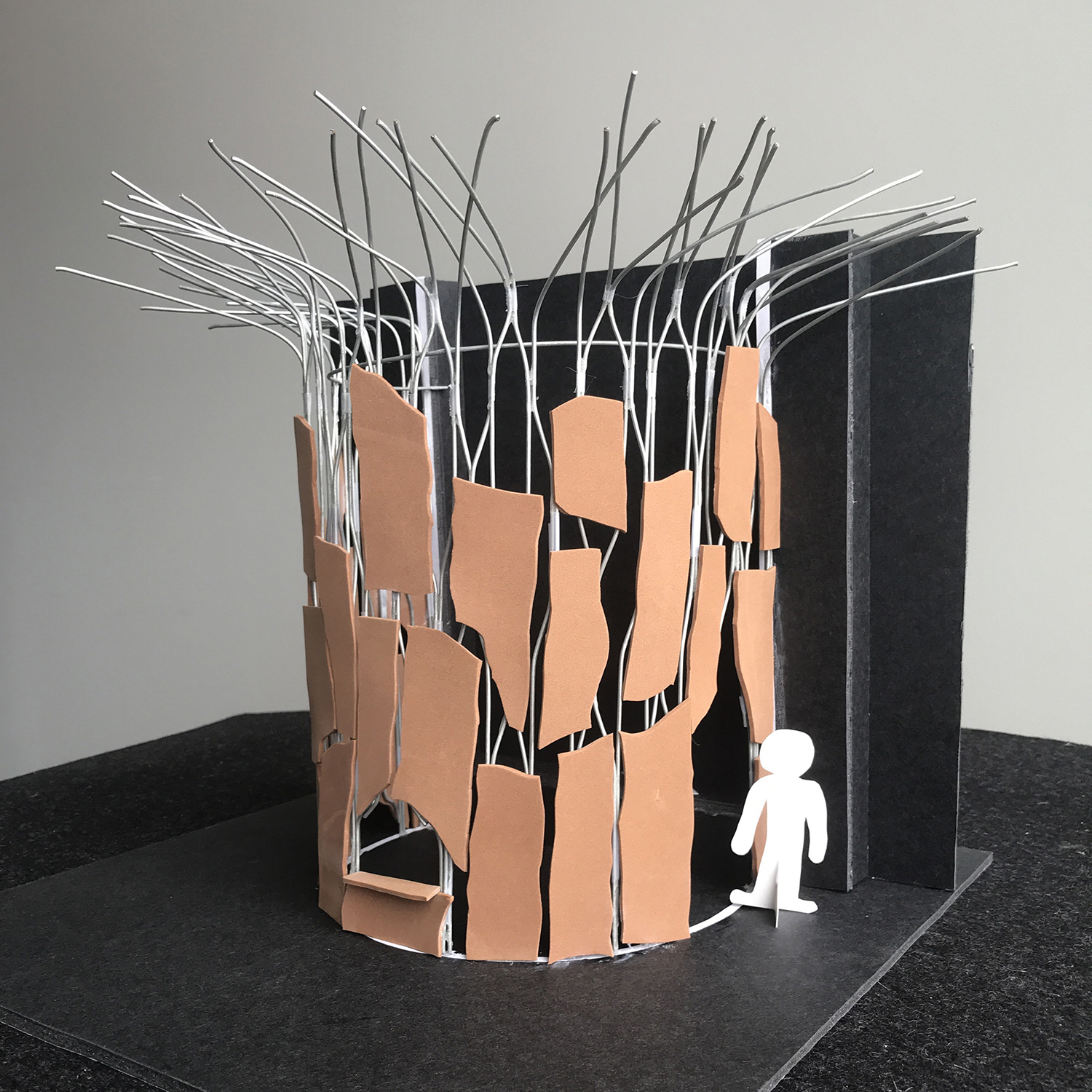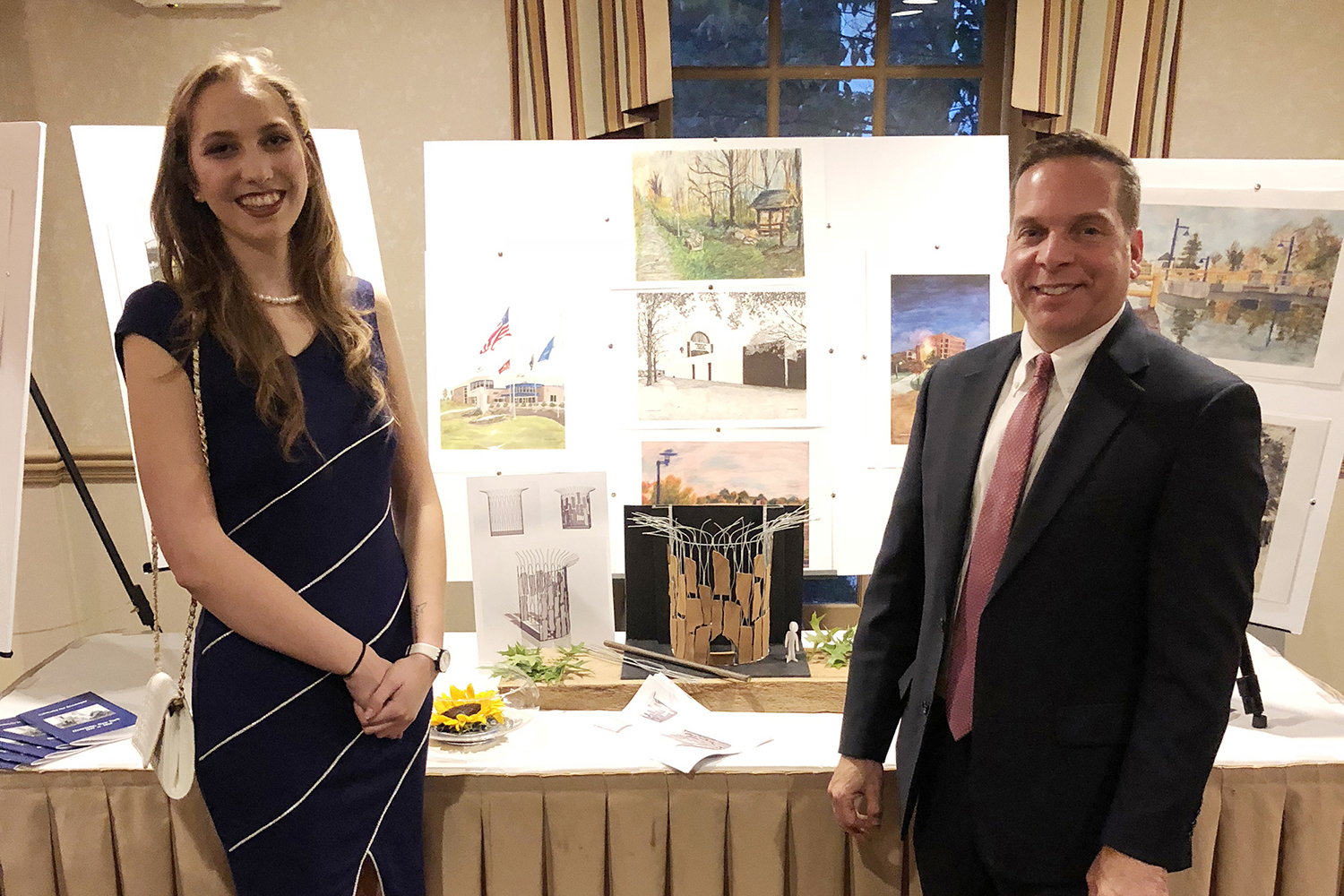Student-faculty team's design to spruce up new Henrietta library
Casey Mazza, left, and Gary Molinari at the Town of Henrietta's bicentennial gala on Sept. 29 at Locust Hill Country Club. They presented their library project to those in attendance.
Casey Mazza maintains a lively schedule as a Rochester Institute of Technology student.
She is in multiple clubs and a sorority (Alpha Sigma Alpha), started a business and spent time on RIT’s women’s crew team.
“I try to take advantage of everything RIT has to offer because there is so much,” Mazza said. “I love the people here.”
In between it all, Mazza thrives in the Industrial Design program, leveraging its numerous academic opportunities. A prime example is the interactive reading-and-play space she co-designed for the children’s section of the Henrietta Public Library’s new, soon-to-open building.
Mazza collaborated with fellow students to complete a concept for T-Minus 151, the Industrial Design program’s annual, weeklong design blitz for which student teams complete a sponsored project. This year, they were challenged to capture the style of late RIT Artist-in-Residence Wendell Castle in creating products using reclaimed wood from a long-standing campus oak tree felled by a 2017 windstorm.
A juried panel selected the design by Mazza’s group as one of three winning projects to be incorporated into RIT’s celebration of 50 years on the Henrietta campus.
Eager to see the design come to fruition, Gary Molinari, lecturer of Industrial Design, approached a willing Mazza to work together in partnership with the Town of Henrietta to develop the project over the summer and beyond.
“It’s really nice to be able to do projects like these and maybe make a difference in the world while I am still in college,” said Mazza, in her fourth year.
After months of refinement and meetings with architects, town and construction employees and other groups, the “Sprout” project is scheduled to be completed by the building’s target finish date of spring 2019, Molinari said. “Sprout” is an approximately 14-foot-high, 10-foot diameter tree that serves as a quiet reading nook and play area for children. The interior of the structure will house a bench, along with a secret crawl space and puppet window.
“We wanted to create a fantasy world,” Mazza said. “It’s a physical area you can go to and feel like you’re in this other world while reading your book.”

The wood-and-steel tree will also be an aesthetic attraction for the new library. Molinari said pieces of the wood are to be uniquely fashioned and attached to the framework, forming an abstract structure that channels the work of Castle. The plan is for Mazza and Molinari to supervise the construction of it.
“Having opportunities like T-Minus, to work with real organizations, projects can go somewhere, which is super exciting,” Molinari said.
The concept originated during T-Minus was a sketch rendering of the entire children’s area in the new library. In addition to the tree, there were wood tables and chairs and a wall mural ripe for doodling. It was since scaled down to make implementation feasible by the opening.
“It’s the closest to real world as you’re going to get in school,” Mazza said of the experiential learning opportunity. “I don’t know if I could be any more prepared for the real world. … I’m getting a great portfolio piece, amazing contacts, an amazing experience, a whole new body of knowledge. It’s been very rewarding.”
To Mazza, her prominent role in the Henrietta Public Library project is one of many verifications of her first impression of RIT’s Industrial Design program.
During a campus visit, she sensed a supportive community, buoyed by faculty who foster a positive learning environment and empower their students. After meeting associate professor Amos Scully and undergraduate program director Josh Owen that day, Mazza felt an instant connection. She was sold.
“I just saw how excited (Owen) was about imparting his knowledge on students,” said Mazza, who grew up in Michigan.
Mazza has since enjoyed being one of those students.
“I loved working with Gary over the summer,” she said. “He really pushed me and that’s what I want — to be challenged. I’ve enjoyed it here, especially because of how great the professors are.”
While flourishing in the Industrial Design program, Mazza’s curiosities permeated to other areas.
Since her freshman year, Mazza has worked with RIT’s Simone Center for Innovation and Entrepreneurship on developing her business idea, “The Lounge on Campus.” It’s a peer-to-peer web platform that allows RIT students to sell services and products to one another. The services can range from lifestyle needs like meal preparation and dog-sitting to major-related items like logo design, coding and photography work.
“Any kind of skills you have, you can market those to the other students on campus,” Mazza said.
“The Lounge on Campus” is scheduled to launch soon — adding to a list of achievements that has made Mazza’s RIT experience one full of substance.
“She’s taken advantage of a lot,” Molinari said, “and for students who do that, the payoff is great.”









